#ancestral traditions
Explore tagged Tumblr posts
Text
Still thinking about last Purim when my dad tasted my chicken and told me “you cook just like nanny Gertrude did”. Nanny Gertrude died long before I was born, and I don’t have any of her recipes (if she even left a written record). I didn’t learn to cook from anyone on that side of the family. I just apparently have such strong Ashkenazi Bubbe energy that I can recreate the recipes of my long-dead ancestors while going off of nothing but schmaltz and intuition.
41 notes
·
View notes
Text
Expecting the system to support you, aid you, cater to you, and essentially “love” you, for the sake of your humanity is a silly game. As this is not the design.
Those expectations first lay on the individual to be their first advocate. And to advocate for those who do not have the ability to do it for themselves.
Then-connecting with like minded individuals & communities with similar pursuits committed to promote, generate, and provide resources for the benefit of the community not solely for monetary gain.
It’s the building blocks for
M u t u a l A i d
#mutual aid#community building#ancestral healing#bartering#next world#ancestral traditions#indigenous traditions#late stage capitalism#spsp
3 notes
·
View notes
Text
I wish that all people would respect the Earth and each other in the ancestral traditions of a i like to say, the old ways It would make for a better, happier, more sustainable world for us all.

“ancestral traditions”, 2022 by Norman Engel
#ancestral traditions#old ways#respect#sustainable#harmony#live with the earth#honor#wisdom#Indians#they knew what to do#they were right#they cared for future generations#we need to go back to their ways#peace#love#happiness#thank you#sharing#joy#kindness#take only what you need#do the right thing
161 notes
·
View notes
Text
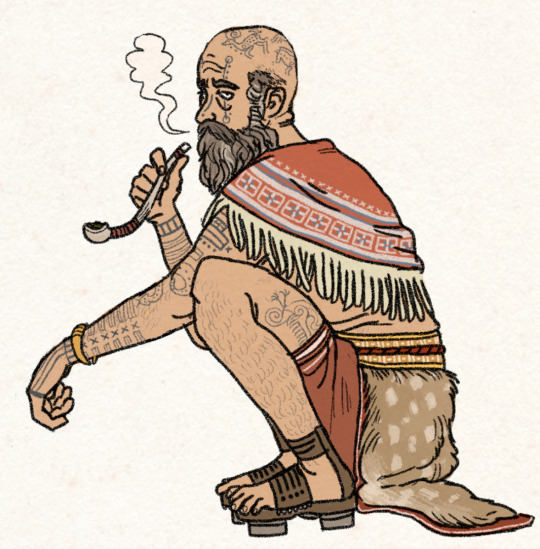
A witch of the Naig-Troibadnnas (Yellowtail river valley) people, resting and enjoying a smoke of the mild stimulant brolge leaf on a hot summer day.
Witches are a small part of the everyday cultural framework among the Hill Tribes. They are individuals considered born possessed by a virgranul, a type of disembodied wild spirit that seeks to inhabit human flesh, either entering the body at the moment of conception, or entering the body at the moment of death. The latter is a dire circumstance that requires significant intercession to fix (the dead body may wander off without rites, leaving the person's soul trapped and liable to warp into the dangerous fuldaigh spirit), while the former circumstance is what causes a person to be born a witch.
In the case of those afflicted in the womb, possession by virgranul is lifelong, and is both a curse and blessing- it divides and isolates them from the human world and causes other wild spirits (both benevolent and malicious) to be perpetually drawn to them, but also allows for them to be attuned to the subtleties of spirits, and able to work magic and divination that the everyday person is incapable of.
Witches are usually recognized from a young age due to marked behavioral differences or atypical development, though are sometimes simply identified as such without obvious behavioral indications, by other witches having read signs of their coming. Their occurrence is not frequent, usually once in a generation for any given tribe. An identified witch child will be taken from their family (the timing varies by tradition, though is usually upon puberty) and into mentorship by an established witch, who will impart their accumulated knowledge and skill and teach the child how to best harness their condition.
One can be a witch regardless of their gender, with the only commonality being that they must remain unmarried, and are expected to never have children (deemed too dangerous, unavoidably placing a child in the path of potentially harmful wild spirits). With no spouses or children to support them in holding a household and herds, witches are instead supported by their communities as means of payment for their services. They typically live in semi-isolation in the boundaries between the village and wilderness (a reflection of their own division between the world of people and of wild spirits, and a protective measure for their communities), and will periodically be brought needed supplies. They do not commonly enter villages unless summoned, or for the sake of certain holidays and festivals, and live most of their lives in seclusion aside from any given mentee (who will in turn care for their mentor in old age).
The societal function of witches is as intermediaries between people and their ancestors, people and wild spirits, and as especially skilled performers of practical magic (most commonly weaving protective spells into worn items, such as clothing or the nose rings of cattle). Forms of practical magic and intercession with ancestors and spirits are performed by all members of society, but a witch has intimate, detailed knowledge of such things and tremendous natural skill that makes them an invaluable asset.
Witches personally discern the identities of the spirits living in any given area and will attempt to familiarize themselves with them, learning in depth about their ways, giving warnings of where the particularly dangerous (or mischievous) ones are, and giving recommendations on which will be receptive to offerings in return for boons. When a village needs to commune with a particularly powerful or dangerous spirit (such as a wildfolk witch), they will commonly send their own witch as an intermediary.
They are ascribed have the ability to directly summon ancestors (who otherwise come and go of their own volition, and rarely ever deign to come at the call of one who is not their descendant). This is of great use when a person finds themselves punished by their ancestors with no certainty as to why, or cases where an orphaned child's ancestry must be identified to gain them proper spiritual support.
They are also regarded as having innate qualities of divination, particularly in reading birdsign (itself generally acknowledged as communication from ancestors, and occasionally gods). The average person has basic knowledge in reading omens of birds and a learned repertoire of key signs, but a witch can divine the messages of birdsign in immense and specific detail, through a vast knowledge system of the meanings of the species, sex, flight direction, gaze, prey, number, and songs of birds. It is common for people to approach a witch for a reading of the skies before undertaking a significant venture or life change, in order to receive detailed and specific advice.
Witches are always literate (and will be taught to read and write by their mentor if they cannot already) and will record their repositories of knowledge in tomes. These are items of absolute secrecy and taboo for a non-witch to touch (the consequences can be severe, you really don't want a witch ancestor-spirit upset with you). Witches can often become competitive about the knowledge stored in these tomes and are known to organize heists amongst themselves in order to gain access to each other's secrets. Most people avoid getting themselves entangled into the complicated rivalries of witches, as these competitions can get ugly and result in many a petty curse if one gains a witch's ire.
---
The only visual cue distinguishing this man as a witch is the tattoos on his forearms, otherwise usually regarded as inappropriate to mark in the contemporary Hill Tribes cultural sphere (the face, upper arms, and sternum is reserved for important clan/tribe/ancestry identification, hands and forearms are reserved for witches, and the rest of the body is appropriate for decoration). These unique forearm tattoos indicate his ancestral connection with a lineage of witches, not blood ancestry but rather the generations of mentors that have produced him. The lines extending down to his fingers are the newest, indicating that he has fully mentored another witch and gained a place in this ancestral line.
The rest of the tattoos here are tribe and blood ancestry identifiers (on the face and upper arms respectively, worn by all members of society), and purely decorative imagery (visible here is a deer, horse, eagle, and a dragon). He also has a snake on his forearm, applied decades ago in an act of youthful rebellion, which has since gotten in the way of critical open skin space.
His clothing is otherwise typical wear for warm seasonal conditions- a man's wool shawl and woven belt, short trousers, decorative deer hide (distinct to the Naig-Troibadnnas), and sandals (these are imported Wardi style sandals, which have been modified with preferred elevated heels). The horn shaped torc on his forearm identifies him as an esteemed elder.
#I think I mentioned the witch tradition by implication in a couple posts but it hasn't come up directly#Witches here are very frequently going to be autistic or having other developmental disorders- with non neurotypical development#and behavior (though without marked intellectual disability) being seen as the impact of possession by virganul.#There's a parallel tradition of witches among the contemporary Finns (distant sibling cultural group to the Hill Tribes) but of MUCH#more core societal significance in which witch-kings are the central figures of power.#Both developed out of common ancestral traditions which diminished in centrality in the Highlands (witches going from clan#leaders to 'guy living on the outskirts of your village who you go to for magical assistance') and increased in centrality in Finns#(witches going from clan leaders to kings with magical powers granted by the gods)#You see a version of the historical predecessor for witches in the drawing of Kulyos and Bernike wrt his forearm tattoos#The proto-Hill Tribes would have regarded their chieftains as a type of witch and the tradition of marking the forearms would#have originally been exclusive to said chieftains. The societal centrality of witches has been lost but they retain traditions of#markings that would have originally identified them as leaders.#(That drawing is also a imaginative though and not just for the bird woman. He's wearing contemporary dress.)#hill tribes#\
230 notes
·
View notes
Text
I'd love if people reblogged and tagged this poll with their answer, their religious identity (if any), and the type of magic they practice! No judgement for any particular answer, just genuinely curious.
#poll#folk magic#ancestral magic#witchblr#witch#folk witchcraft#traditional witchcraft#traditional witches#paganblr#witchy#witchery#southern folk magic#appalachian folk magic#occultism#occult#folk christianity#folk catholicism#reblog for bigger sample size#magic
132 notes
·
View notes
Text
I’m at a crossroads on my practice
So I live in America if those don’t know and my family is quite spread out so to speak. My family came from immigrants (well all white settlers are) but the ones that came here during the mass immigration during the early 20th century even late 19th century of Italians, Germans, Irish, Greeks, etc. my practice is difficult.
Difficult as I do not have any connection to my ancestral homeland of my ancestors practice paganism and witchcraft. My family came from mostly Europe but everywhere in Europe mostly German but also Italian, Greek, Portugal, Welsh, Irish, English, and Scottish, even some Slavic and Scandinavian. It’s hard because I do not know what path is right for me, what source is my path.
I want to practice Norse paganism but I also want to practice Hellenic polytheism even witchcraft it’s hard because I feel like I am a imposter and I’m not sure how to fully accept a path for me. If I go one way, I get pulled to another I can never fully decide on what to do on my path. I know that a lot of Americans who have ancestors all over the place and not connected to their ancestral homeland feels that same disconnection with our practice because it’s rooted in another country and culture. Like Italian Americans culture is similar but still different than actual Italian culture in Italy.
it’s like I don’t really have a choice in the matter it feels like at times. I can still connect to the gods and spirits but I always felt as if something is missing or some sort of guilt. I don’t know if anyone else experienced this I’m pretty sure a lot of people have.
#paganism#hellenic polytheism#witchcraft#hellenic pagan#hellenic community#germanic paganism#german folk magic#norse paganism#italian folk magic#roman polytheism#ancestral worship#traditional witchcraft
20 notes
·
View notes
Text
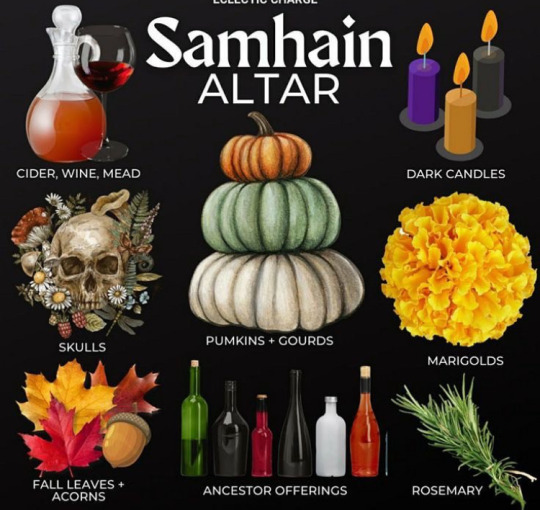


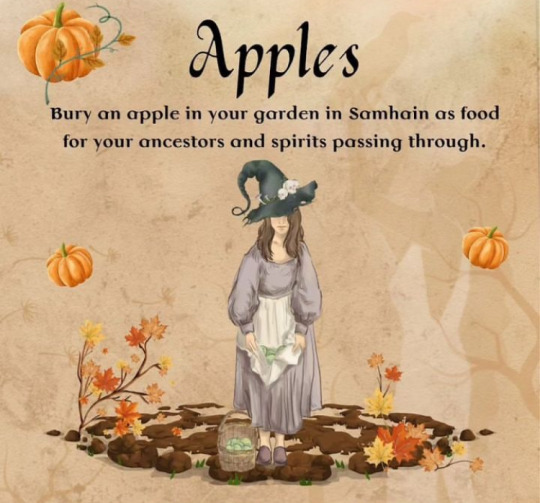
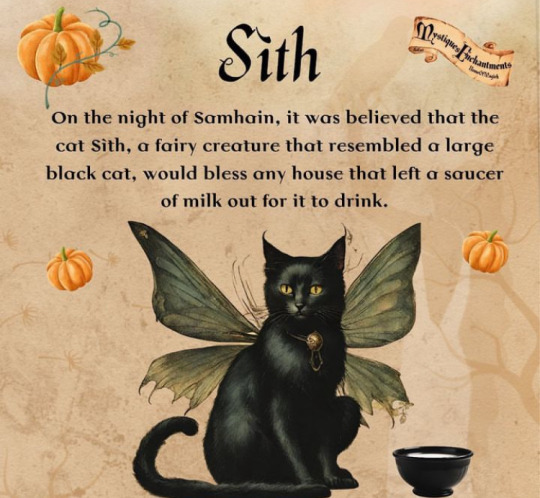
Samhain is approaching and the veil is thinning. It’s the time to connect with the ancestors and collective dead. It’s the time to practise scrying or divination.
For your altar, decorate with natural things from your areas to honour the local land spirits and dead. Fallen leaves, acorns etc. carve or decorate a pumpkin for your altar or windowsill. Gather some local grave yard dirt for your altar if permission is given by the graveyard grim.
Practice divination with any tool you are drawn to. Traditionally it’s a time of scrying and all you need is a dark colour bowl filled with water and a darkened room lit only by candlelight (ensuring candles are not near anything flammable and secure in holders). The water you gaze into should be reflected by candlelight, soften your gaze as you look into your scrying bowl, it does take time and practice but stick with it and keep a note book close by for journaling.
You can also practice your tarot technique as well. Do a reading for yourself or even for the energy of the season. Maybe gather some friends together and do a group reading too.
Honour your ancestors by placing photos of passed loved ones on an altar for the ancestors. You could also add graveyard dirt,found animal bones, herbs associated with the dead etc and can be as simple or as fancy as you like. You can even offer the ancestors an offering. I often do one of incense, candle light and blessed water. I often do this around the dark moon and say the following to them during my offerings
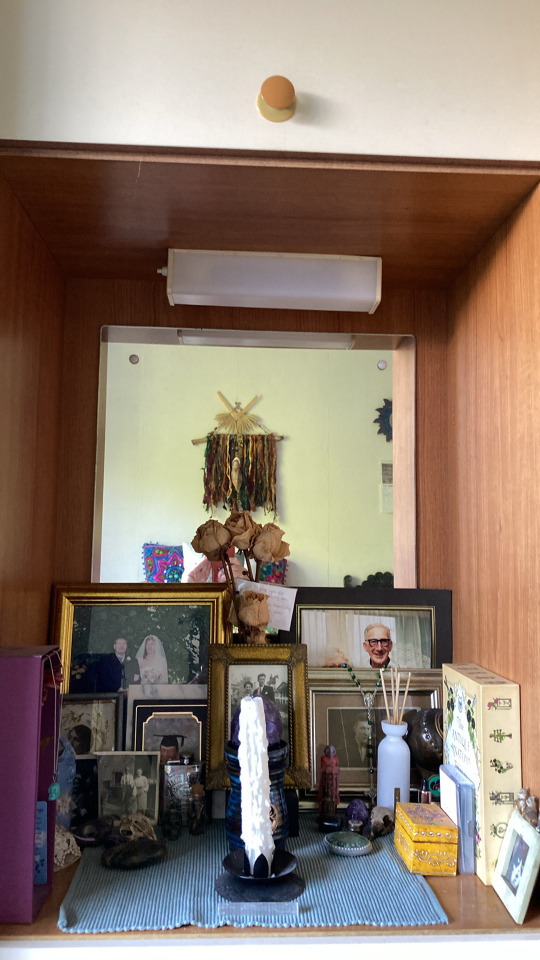
On my ancestor altar (above) I have my late husband, my father and grandparents, aunts and uncles and even a passed beloved pet cat!
I give my offerings and say my words which I share with you here.
“Ancestors, I call to you now to be here with me now and always. Accept these offerings with the love they are given. I offer you Earth the grounding element to secure, I offer you water, the spiritual pure element. I offer you incense the air element for communication. I offer you a candle, the fire element for light and warmth. Ancestors accept these simple offerings in love and remembrance. Beloved Ancestors feed on this earth, smoke, water and light to nourish and strengthen you. Blessed be”
You can tailor the words to suit you and your ancestors and doing this on Samhain and every dark moon helps to strengthen the bond.
#traditional witchcraft#witch#witch community#magick#witchcraft#ancestral witches#kitchen witch#green witch#samhain#halloween#ancestors#ancestor#ancestral veneration#honouring the ancestors#working with ancestors#day of the dead#dayofthedead#divination#water divination#happy halloweeeeeeen#witch craft#witches#witchblr
91 notes
·
View notes
Text
The way that a Yamanaka behaves seems rehearsed. Like something has possessed them and is controlling them like a puppet. They only slightly understand how to move. Their conversations are stilted. They walk too loudly. No matter their expression, they look off. It’s like staring at an alien or a strange imitation that only a demon would think passes as ‘normal’. You cannot invade their minds. Genjutsu is useless. They struggle with their bodies so the easiest way to kill them is to just go for the jugular.
#this does not apply to Yamanaka Ino#she was raised in Konoha#not the ancestral lands#take that 'tradition'#naruto#naruto headcanons#yamanaka ino#yamanaka headcanons#yamanaka clan headcanons#yamanaka inoichi#possession#the akimichi clan is a bodily horror story#the nara clan is a lovecraftian horror story#the yamanaka clan is a ghost horror story#part 3/3#happy halloween
11 notes
·
View notes
Text
Show me your threads
Your blue thread
Your sun-weave thread
Your mud thread
Your mica thread
Your tenzontle net
Your fire smoke braid
Your water serpent net
Your falls below thread
Your smoke hairs
Grass braid
Tender corn braid
Maguey needle thread
A tight braid
A firm net to catch
Red healing hoops
To thread through the story
And wrap around
Turtle's Back
- from Patrisia Gonzales's 'Red Medicine: Traditional Indigenous Rites of Birthing and Healing

Navajo woman weaving a rug in her hogan
#threads#weaving#folkways#ancient ways#sacred ways#Red Medicine: Traditional Indigenous Rites of Birthing and Healing#Patrisia Gonzales#healing#medicine#Ancestors Alive!#What is Remembered Lives#Ancestral Medicine#Turtle Back#Turtle#Navajo#rug weaving
18 notes
·
View notes
Text
I decided to enjoy Christmas this morning by getting off my very pained feet (I spent much of yesterday and the day before walking around or standing at the stove) and playing Mass Effect. My Shepard had just become a Spectre and finished her Citadel missions, so I decided to do her first side mission ever and randomly ended up here:

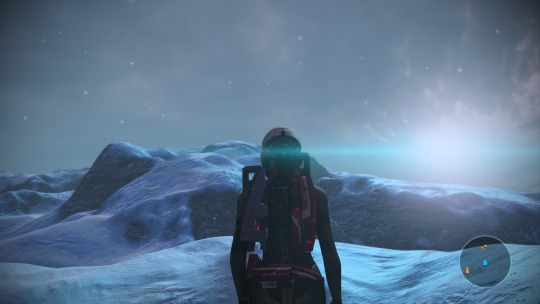
♫ I'm dreaaaaaming of a white Christmasssss ♫
Anyway, Merry Christmas and *squints at the sky* soon from here in the PNW, Happy Hanukkah to all of you who celebrate!
#anghraine babbles#anghraine's pics#anghraine's gaming#the adventures of space redacted#mass effect 1#cw christmas#j decided to have my galaktoboureko syrup with his ancestral crepe family recipe and it was SO good#what a day for fusing jewish and greek traditions - but it's been a great day tbh
13 notes
·
View notes
Text

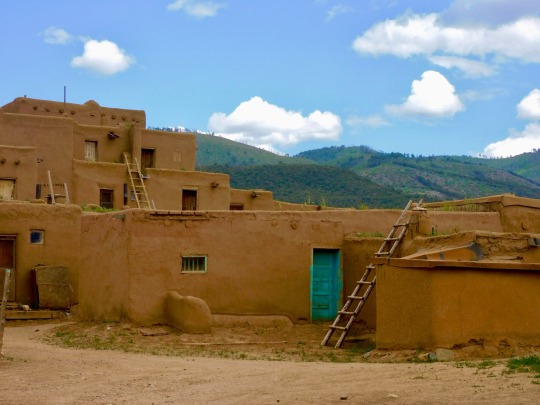
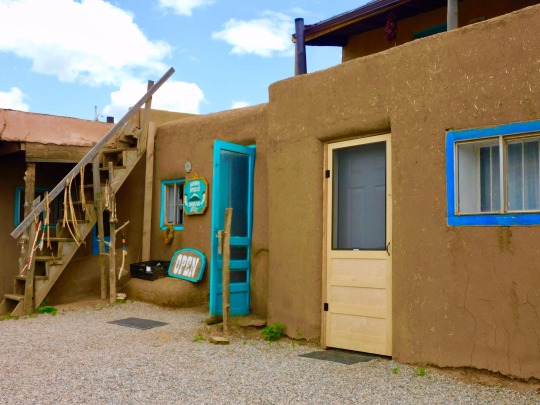

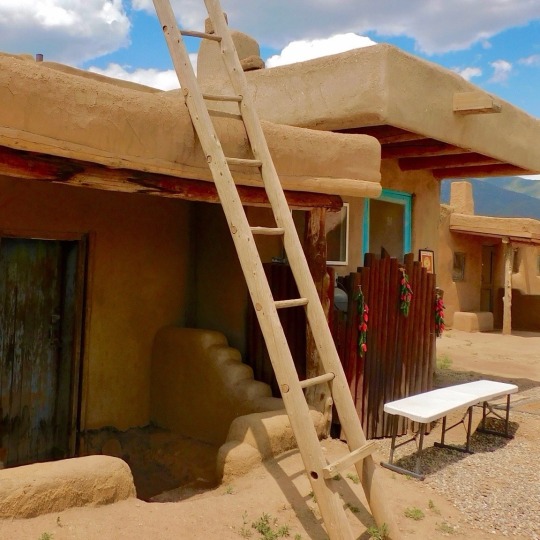
Taos Pueblo, NM
it was such a privilege being able to visit the Pueblo and immerse myself with the environment, the experience was worth the trip
#new mexico#pueblos indígenas#building#architecture#ancestral puebloans#traditional design#native american#landscape#photography#religious#culture#ancestors#nature#respect#sacred space#architecture photography#summer#june#beautiful#home#travel#road trip#business#my photgraphy
45 notes
·
View notes
Text
realizing after meeting eldrin how many parallels I've completely accidentally managed to set up between davrin and rye despite the fact that they're such incredibly different personalities and feeling an embarrassing swell of real tears rising up
#...I don't care if it makes for a better story I'm not letting davrin die I can't let davrin die I'm shielding him with my own body#the narrative can't have him that's my brother and friend and assan's dad learning he's so much more than he thought he was#I want to run up to the last battle with davrin and lucanis and rye squabbling the whole way the way it was meant to be#...so I'm really going to just go ahead and fuck over the ancestral spirit of the dwarves again basically then aren't I fhsjka#ah yes. The true thedosian tradition: fucking over the dwarves so incredibly bad every time and like mostly as collateral damage!!!#when an elven god sneezes the entirety of dwarven civilization falls over dead on the spot for no reason. im so so so sorry#but. probably not sorry enough to let go of davrin's hand to stop him from falling fdhsakj#dragon age#dragon age: the veilguard#dragon age: the veilguard spoilers#dragon age spoilers#davrin#oc: Ellaryen Ingellvar#rye seeing davrin and eldrin interact and unavoidably thinking about how old renn would be today if he were still alive like 'this is fine'#(it was not fine but they won't actually realize that until their soul cracks open to reveal the abyss inside in about half an act's time)#I am going to do a 'golden' run with rye once I know the game in and out so I can get it all right (I didn't know him in the beginning!)#and do quests in the most pleasing order and everything. which has me afraid I'll explore the darker timeline where davrin does die#but like. let me have the other world first at least I'm going to be selfish on the first run
10 notes
·
View notes
Text

#aesthetic#ai generated#aryan race#coquette#white#trad#traditional#vril#vril energy#sun#sport#sports#youth#athleticism#ancestry#ancestral#ancient rome#ancient history#ancient greece#girlblogging#europe#europa#summer#vitality#stamina#esoteric#hyperborea#sol#bronze age#retvrn
17 notes
·
View notes
Text
The Philosophy of Shinto
Shinto, often referred to as "the way of the gods," is the indigenous spirituality of Japan. Unlike many Western religions, Shinto does not have a single founder, sacred texts, or a formalized set of doctrines. Instead, it is characterized by a reverence for nature, the worship of kami (spirits or deities), and practices that emphasize purification and rituals. Here’s an exploration of the key principles and ideas within the philosophy of Shinto:
1. Reverence for Nature
Nature as Sacred: In Shinto, nature is considered sacred and imbued with spiritual significance. Mountains, rivers, trees, rocks, and other natural features are often seen as manifestations of kami.
Harmony with Nature: Living in harmony with nature is a central tenet. This involves respecting and protecting the natural environment, recognizing it as the dwelling place of the kami.
2. Kami (Spirits or Deities)
Multiplicity of Kami: Shinto recognizes a vast number of kami, which can be spirits of natural objects, ancestors, or deified historical figures. Kami are not all-powerful gods but rather spirits with specific roles and localities.
Interconnection with Kami: The relationship between humans and kami is one of mutual respect and care. People perform rituals and offer prayers to kami to seek their blessings, protection, and guidance.
3. Ritual Purification
Purification Practices: Purification, or misogi, is a fundamental aspect of Shinto. It involves cleansing oneself of impurities and pollutants to maintain spiritual and physical purity. This can be done through washing, rituals, or even symbolic acts.
Rituals and Festivals: Shinto rituals and festivals (matsuri) are numerous and diverse, often held at shrines dedicated to various kami. These ceremonies reinforce the connection between the community and the kami, celebrating seasonal changes, agricultural cycles, and significant life events.
4. Shrines and Sacred Spaces
Shinto Shrines: Shrines, or jinja, are the focal points of Shinto worship. They are considered the homes of the kami and are places where people can go to offer prayers, perform rituals, and seek blessings.
Torii Gates: The iconic torii gates mark the entrance to sacred spaces, symbolizing the transition from the mundane to the sacred. Passing through a torii gate signifies entering a space where the kami dwell.
5. Ancestral Worship
Respect for Ancestors: Ancestral worship is an important component of Shinto. Families honor their ancestors through rituals and offerings, believing that deceased family members continue to influence and protect the living.
Continuity and Connection: This practice underscores the continuity of life and the interconnectedness of generations. Ancestors are seen as integral to the family's ongoing spiritual wellbeing.
6. Syncretism with Other Beliefs
Integration with Buddhism: Shinto has historically coexisted and intertwined with Buddhism in Japan. Many Japanese people practice both religions, incorporating elements of each into their daily lives and rituals.
Adaptability: Shinto’s flexibility and lack of rigid doctrines allow it to integrate other spiritual and philosophical traditions, adapting to the evolving cultural landscape.
The philosophy of Shinto offers a unique perspective on spirituality that is deeply intertwined with nature, community, and the reverence for life’s sacred aspects. It emphasizes living in harmony with the natural world, maintaining purity through rituals, honoring the kami and ancestors, and celebrating the cyclical nature of life. Shinto’s adaptability and integration with other traditions highlight its enduring relevance in contemporary Japanese culture.
#philosophy#epistemology#knowledge#learning#education#chatgpt#Shinto#Philosophy Of Shinto#Kami#Nature Worship#Ritual Purification#Shinto Shrines#Ancestral Worship#Japanese Spirituality#Torii Gates#Misogi#Matsuri#Spiritual Traditions#Indigenous Beliefs#Syncretism#Cultural Heritage
9 notes
·
View notes
Text
FAMILY TITLES AMONG THE HILL TRIBES
(ft. various linguistic notes and tangents)
In-universe Brakul’s self-given title of ‘Red-Dog’ is Brakul 'ne-Dainh' in his native language (Bict-Urbinnas dialect of the Highland language group) and Brakul 'Chin-Reyla' in Wardi. Ne-Dainh/Chin-Reyla is not something he treats as or considers an actual surname or identity, just a self-styled nickname. He already has a title.
Family names/surnames are not a native practice among the Hill Tribes (though some clans or individual families have adopted this practice), and all traditionally use titles that designate immediate ancestry, clan and tribe. These full titles are officially given when one comes of age and are spoken aloud in ceremony (with the entire direct male and female lines listed by name, with most traditions expecting 12 generations of each being named).
The function is to cement one’s sense of place in the world, and their place in a direct ancestral line, which puts the person under the full watch and guidance of their ancestors. It's also a critical method of recording lineage- the long held practice of each person memorizing at least 24 total direct ancestors allows for very long, largely accurate records of family history to be kept, with some people able to trace their ancestry all the way back to initial settlement of the Highlands (or even beyond).
Brakul’s full title is:
“Brakul virsum Kuligan et Borunil an Briyonis ne-Taig an Bict-Urbinnas”
Which dead literally translates to “Brakul son of Kuligan and Borunil of the Foothills (of) Red-Cattle, of the North (Urbin/Erubin) River Valley” but has a much richer meaning in the original language.
"BRAKUL VIRSUM KULIGAN ET BORUNIL"
The actual meaning here is closer to ‘Brakul, son of Kuligan and his father’s fathers, and Borunil and her mother’s mothers’.
“Virsum” means ‘child (son/daughter) of’ (the gender is contextual), but implies the person’s status as a descendant of a full male and female line of ancestors. A different word is used if you’re just saying ‘I’m so and so’s son”. The title describes him as a son of his father Kuligan and of Kuligan’s male line, and of his mother Borunil and Borunil's female line.
All ancestors (within this particular system of kinship, divided into one direct male line from the father and one direct female line from the mother, and not including husbands from the female line or wives from the male line) are invoked and credited with the word ‘virsum’. Speaking it as part of the personal title is part of the routine and necessary honoring of one’s ancestors, who watch over their descendants from the afterlife and can temporarily return to the land to guide and protect (and sometimes punish, or teach sharp lessons to) the living.
"AN BRIYONIS NE-TAIG"
The actual meaning here would be understood as ‘clan/people of the foothills where cattle are lit red by the setting sun'.
‘Briyonis’ is the word for ‘foothill’, citing his clan’s specific location being the foothills that form the slopes of the north Urbin river valley. He is of a lesser clan within the powerful North Urbin River tribe. His clan benefits from close affiliation to their more powerful ruling clans located directly in the river valley, which grants them access to a greater variety of cultivated foods, but their actual position in the foothills still renders them predominantly reliant on cattle for subsistence. Clan names referencing cattle or horses are very common, given their frequent centrality to life.
The ‘ne-Taig’ literally means ‘red cattle’, but the ‘ne’ color word for red specifically invokes shades of red seen in and cast by a rising/setting sun. This red cast is culturally regarded as a unique beauty and evocative (and part of the name) of the solar god Hraighne. The foothills his clan is physically located on are a vantage point from which the western horizon is not fully obscured by mountains, and they experience very striking sunsets and are directly touched by the light. This is fairly unique to this location, and is invoked in the clan name and identity. ‘Ne-Taig’ here suggests a visual of grazing cattle illuminated red by the sun as it crosses the horizon.
‘Ne-Dainh’ carries the same implication, a dog illuminated red by setting sunlight. The Wardi language does not have a comparable word for a sunlit red and ‘Chin-Reyla’ really does just mean ‘(orangeish) red dog’ (‘reyla’ is specific to orangey-red colors, which is the closest match he could get. There’s no way to impart the meaning of ‘sunlit-red dog’ in Wardi that is non-clunky enough to be appropriate for a name).
"AN BICT-URBINNAS"
‘an Bict-Urbinnas’ is fairly simple, Bict means ‘north’, and 'Urbin' is the name of the specific river that stems from a northern and eastern tributary. This river has a very ancient name (or a derivative of one) that predates settlement by the Hill Tribes, and its exact meaning is lost.
The root -(n)nas designates a river valley, but has strong implications of being an esteemed and bountiful place, rather than solely a literal geographical descriptor (as the river valleys are centers of power and trade in the highlands). It may be a loanword from the Wardi language family, as its usage is VERY similar in form and function to the Wardi -(n)nos, which also suggests a place of esteem and bounty (more specifically having connotations of a kingdom).
’An’ literally means ‘of’, but in the specific sense of describing the place and identity of a collection of people. ‘an Bict Urbinnas’ would be understood in speech as ‘of the north Urbin River Valley (people)’. The clans historically settled in and around the valley of the North Urbin River form the totality of the Bict-Urbinnas tribe.
The ‘Urbin’ word predates the contemporary Wardi name ‘Erubin’ for the river, the latter of which invokes the semi-mythological founding figure Erub, who himself was of a Wardi tribe located downriver to the south of the Highlands. The real historically extant ‘Erub’ was most likely named Urub after the river, with his cited name shifting over the centuries in folklore, and the Wardi name for the river shifting with it.
‘Erubin’ as a corruption of ‘Urbin’ functions very well in Wardi language due to ‘-bi/bin’ denoting something as a ‘gift’, usually in a more metaphorical sense. ‘Erubin’ is understood as meaning ‘(The river that is) Erub’s gift’, and the Erubin/Urbin river is a key tributary to the much larger Black river, one of the key rivers that feeds the region's wetter and more fertile west. This 'gift' meaning also occurs in the name of the southeastern Imperial Wardi city-state Erubinnos, which is understood as meaning ’((The kingdom that is) Erub’s gift’. He is considered to have conquered and taken the land (from the core city's actual founders, the Wogan people) and established a kingdom there in the early days of warring Wardi tribal monarchies.
#Just dropping this randomly because it's a pretty complete lore dump in my notes app#Family names are a big fucking deal in the Wardi cultural sphere and not having one is associated with being a bastard or otherwise#displaced or unwanted. If pressed Brakul either fully lies and says 'ne-Dainh' (which will just come off as 'oh it's some foreign name')#Or lists his actual title (not a family name but equally important). Sometimes listing all 24 generations if he's particularly annoyed.#It's only strictly necessary to memorize 12 ancestors in each line but it's considered good practice to be able#to cite associated non-direct ancestor husbands/wives/siblings/etc. That's where the tattoos as a mnemonic device comes in#It's easy to memorize 24 ancestors but very difficult to memorize 24 ancestors and at least some of their family members#And remembering and honoring the dead by name is of great importance- both puts you under the protection of more#ancestors (including non-direct ones) and ensures the dead's status in the afterlife is secure (it's believed that fully forgotten#dead leave the celestial fields and can no longer directly intercede with the living- though with some additional nuances to what#constitutes being fully forgotten)#Venerating and remembering the dead is a huge focus of cultural practice and additional methods are used to safeguard#ancestors (and other honored dead without descendants) whose names have been forgotten. There's one yearly holiday focused entirely on#the nameless dead where they are invoked and honored via little straw dolls that are burnt in bonfires high in the mountains so the#smoke is sent up to the Fields. It takes weeks of preparation and tens (maybe hundreds idk I'm bad with scale) of thousands of#dolls will be made each year across the Highlands for this purpose. Honoring them with effigy even without name is usually#considered enough to safeguard their afterlife for at least another year.#Also yeah kinship systems among the Hill Tribes (and very similarly among the Finns) follow a male line/female line system#Only father's father's fathers (...) and mother's mother's mothers (...) are considered direct ancestors (though all four grandparents#are sometimes honored as ancestors even if only two are considered DIRECT ancestral kin- this tradition varies)#Inheritance systems are somewhat matrilineal given that a wife is considered the owner and arbiter of property and a husband is#its protector and active manager. If a man and woman from different clans (or tribes) marry any children will be considered to be of#the clan/tribe of whichever spouse does NOT relocate in marriage.#Whether the husband moves in with the wife or the wife moves in with the husband is dependent on an arbitration process#and the husband (and his family) being able to provide a bride price (which is somewhat of a payment for the land/property#the wife's mother will be passing down to the new husband's management should he move in- and displays his ability to care#for and provide valued assets. A man who can provide a bride price tends to receive greater respect)#This is most commonly going to be livestock (and almost ubiquitously includes a single cattle to be butchered for the wedding feast)#But can include other valuables or assets like land or grain/seeds or etc. There is no intra-Highlands monetary system and the internal#economy is built on trade. So Imperial Wardi currency is mostly useless but is sometimes given in marriages between clans with strong
41 notes
·
View notes
Text


September’s here and it’s reminding me of my initial pull towards Gaulpol. The signs the ancestors, who I refer to as ‘bees’ for various reasons, sent. The delightful syncretism that was shown to me then. (Attack bees, healing springs and headlessness, so catholic and oh so Gaulish 🤪) I’m looking forward to exploring the Matronae, depicted above holding a cornucopia and with a bee relief above them, as ancestral deities this year.
#witchcraft#traditional witchcraft#gaulish polythiesm#dea matronae#matronae#syncretism#folk Catholicism#ancestral veneration
7 notes
·
View notes